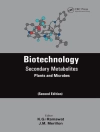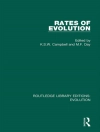Common to many bacteria is the ability to establish a symbiotic relationship or to evade innate immune responses of an animal, plant, fish or insect host. Most often this capacity is mediated by a type III secretion system (T3SS). The function of these complex molecular machines is likened to a syringe-needle injection device that is dedicated to the translocation of effector proteins directly into target eukaryotic cells. Unlike traditional molecular chaperones, these specialized type III chaperon do not assist in protein folding and are not energized by ATP. Controversy still surrounds their primary role; as bodyguards to prevent premature aggregation or as pilots to direct substrate secretion through the correct T3SS. Moreover, some chaperones display a bewildering propensity to interact with several additional T3S-associated proteins – the relevance of which remains uncertain. Structural data has now appeared for several important type III chaperones, either alone or in complex with their cognate substrate.
Matthew S Francis
Type III Secretion Chaperones [PDF ebook]
A Molecular Toolkit for all Occasions
Type III Secretion Chaperones [PDF ebook]
A Molecular Toolkit for all Occasions
ซื้อ eBook เล่มนี้และรับฟรีอีก 1 เล่ม!
รูป PDF ● หน้า 116 ● ISBN 9781536112245 ● บรรณาธิการ Matthew S Francis ● สำนักพิมพ์ Nova Science Publishers ● การตีพิมพ์ 2017 ● ที่สามารถดาวน์โหลดได้ 3 ครั้ง ● เงินตรา EUR ● ID 7216568 ● ป้องกันการคัดลอก Adobe DRM
ต้องใช้เครื่องอ่านหนังสืออิเล็กทรอนิกส์ที่มีความสามารถ DRM












